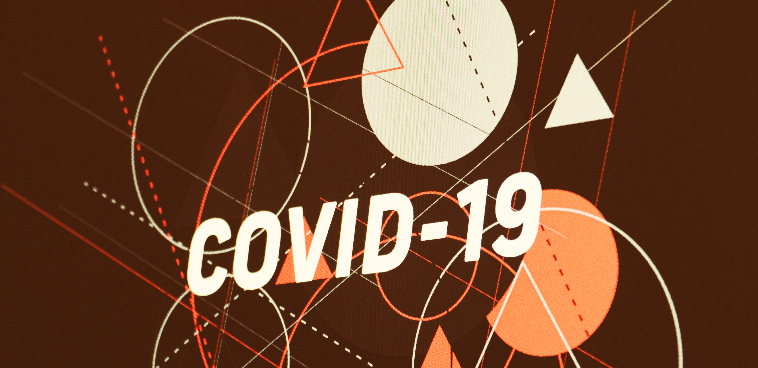In 2020, we learned a great deal. Perhaps most importantly is that very little is for certain, particularly in business. It’s much harder now to make predictions about the future or business sustainability with confidence. As the world navigated the first months of our “new normal,” many business leaders realized that with all of this uncertainty, the best thing we can do is offer clarity.
A solid example of this is Ricoh’s own vision for the future. In 2018, we outlined our plan to transform into a digital services company that combines technology and expertise to solve business problems. The rationale behind this planning was market-driven; we anticipated that our industry required a transition to services to continue thriving. It was an agile three-year plan that we mapped out thoroughly with checkpoints along the way.
And then COVID-19 happened, and, like other businesses, we had to adjust. Our three-year plan accelerated into a three-month plan practically overnight.
This acceleration was unexpected, to say the least. But we quickly realized, to be successful we must offer our employees, customers and partners clarity. What people needed was a sense of consistency in a time of tumultuous uncertainty and change.
To provide that clarity and consistency, we started with a multi-step plan that began with stabilization. As you would expect, safety of our employees, customers, partners and families was and continues to be first priority. This plan also included efforts to remain financially viable and retain our talented team. Once we achieved these steps, we focused on adapting to the new mindsets and tools needed to most effectively empower the agile work experiences that COVID-19 precautions demand, as well as business sustainability.
This plan helped to provide a sense of focus when much else in the world — at home, at work, with both places often being the same — was so uncertain.
Looking back at the past 10-11 months, when digital transformation became an absolute necessity, can give us useful insights into the world of work five years from now. Moving forward, a business strategy must factor in agility and flexibility. A strategy is most effective when it is agile — when consistent work experiences in different workplaces lead to consistent productivity.
Business leaders must ask ourselves: How will the measures we put in place today shape the world as we know it tomorrow? And how will today’s uncertainty impact our “normal” five years from now? Here are three considerations:
Consumerization of everything
We’ve been forced to learn new habits, habits that were likely thought of as “never going to happen.” We, as a society, have been forced to adapt. Business and technology also must adapt.
Think about it. Today, we step out of our homes for a walk or a trip to the grocery store, and we make sure we have our keys and a mask. Prior to 2020, would we ever have thought of a mask, or even owned one? If you visit restaurants, you are likely scanning QR codes for menus. One year ago, would you have ever thought you’d need your phone to decide on an appetizer?
Backup toilet paper, paper towels and even flour are now a must in many households. Previously, were you thinking about whether you had enough flour or if it would be available in the store?
These newfound considerations will have lasting impacts. And they will have an effect on both our personal and professional lives. For businesses, this means that the definition of workplace safety, wherever those work experiences are taking place, will evolve.
Expectations for more security, instant access
Many newfound habits arising from trying to contain the spread of coronavirus involve attempting to touch things less frequently. In business, this may require more electronic modes of accessing and managing information. This will require more security, particularly for confidential information. Despite best efforts to keep such surfaces clean, germs can spread via high-touch surfaces such as boardroom technologies and collaboration tools.
This is another area where businesses must adapt. “Touchless” or voice-command technologies can help grant access to information swiftly and securely. New interactive, flat-panel display technologies or virtual meeting tools with proper login authentication can help address these safety and security concerns.
The new contingency plan
One takeaway most business leaders uncovered in 2020 is that they must prepare for more “what if” scenarios than their previous contingency plans outlined. Traditional business continuity and disaster-recovery plans focused on natural disasters, national emergencies and other similar scenarios. A global pandemic was likely not in the plan. And now we know it should be.
The impacts of a global pandemic are incredibly multi-faceted. Think about what’s involved: enabling work experiences from anywhere, granting secure information access and workflows, working to ensure customer continuity and much more. What we have learned in 2020 is that the more seamless we can make these transitions, the more effective workers are empowered to be.
The future has never been predictable, but we can learn from our past to get a clearer picture of what’s next or what could be next. 2020 taught us that agility and flexibility are not optional. And to succeed in the future, we should anticipate uncertainty while also committing to providing clarity.
Joji Tokunaga is president and CEO for Ricoh Americas and was recently named a Most Admired CEO by the Philadelphia Business Journal. Tokunaga empowers his team to succeed while driving profitability, resource alignment, and operational efficiencies that position the organization for continued growth and success.
If you enjoyed this article, sign up for SmartBrief’s free e-mails on leadership, business transformation and HR, among SmartBrief’s more than 200 industry-focused newsletters.
